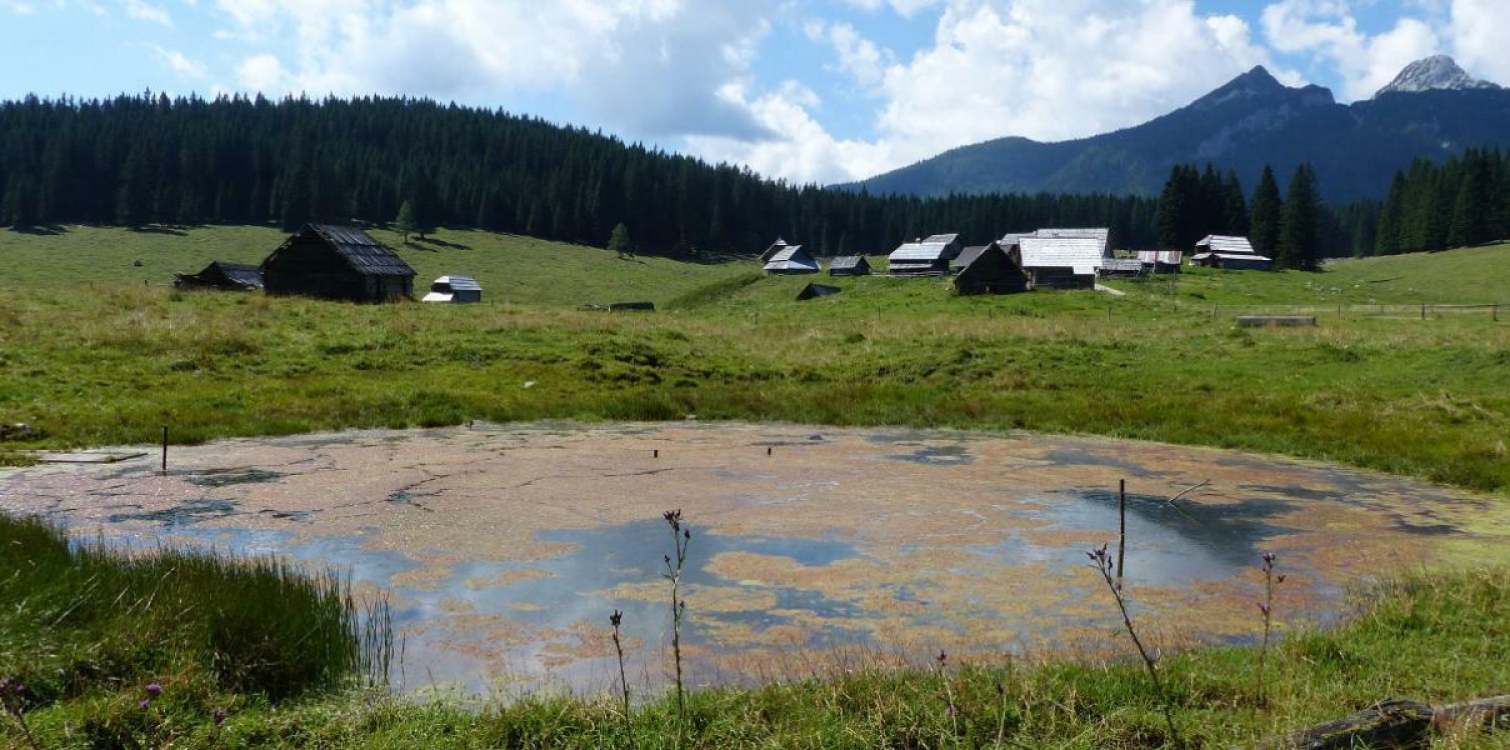- The bottom is covered with an impermeable layer of clay, which prevents water from seeping through.
- In the mountainous world, they are formed in snow-covered depressions with favourable soil conditions or are man-made for watering grazing animals.
- Farmers covered the bottom and lower slope of a shallow sinkhole with clay and waited for rain.
- All sinkholes ponds, natural and man-made, are only a few metres to a few tens of metres in size and no more than 1.5 m deep.
- Due to the abandonment of grazing, some have completely filled with soil and become overgrown.

Source: Edmonson County, Kentucky
Because they are located in areas where surface water is scarce, they are home to organisms that are water-dependent.
The loss of such aquatic environments threatens the existence of three species of amphibians: yellow-bellied toad, Alpine newt and Italian crested newt , which is why they are particularly protected in Natura 2000 sites.
In addition to amphibians, a variety of insects are common in the mudflats: dragonflies, water striders and water beetles.



An example is the duckweeds, which is common in the Pokljuka area. It is a floating aquatic plant that can completely overgrow the water surface.
Other plant species that occur in the mudflats are from the group of Carex, Juncus and Eriophorum.

Lemna minuta

Thank you.

